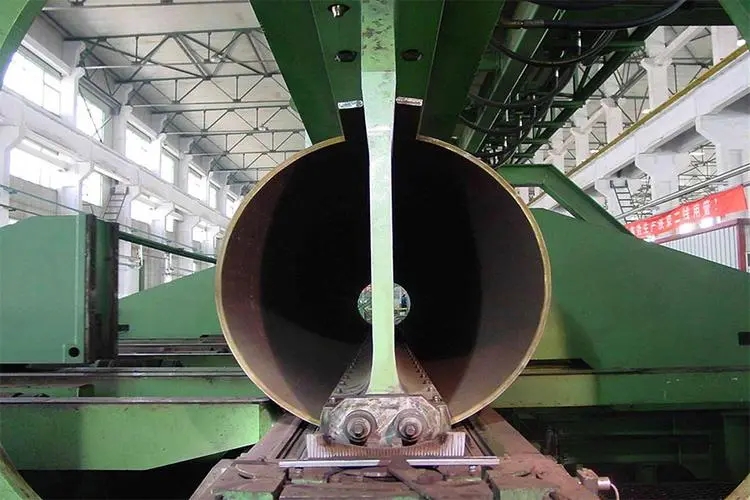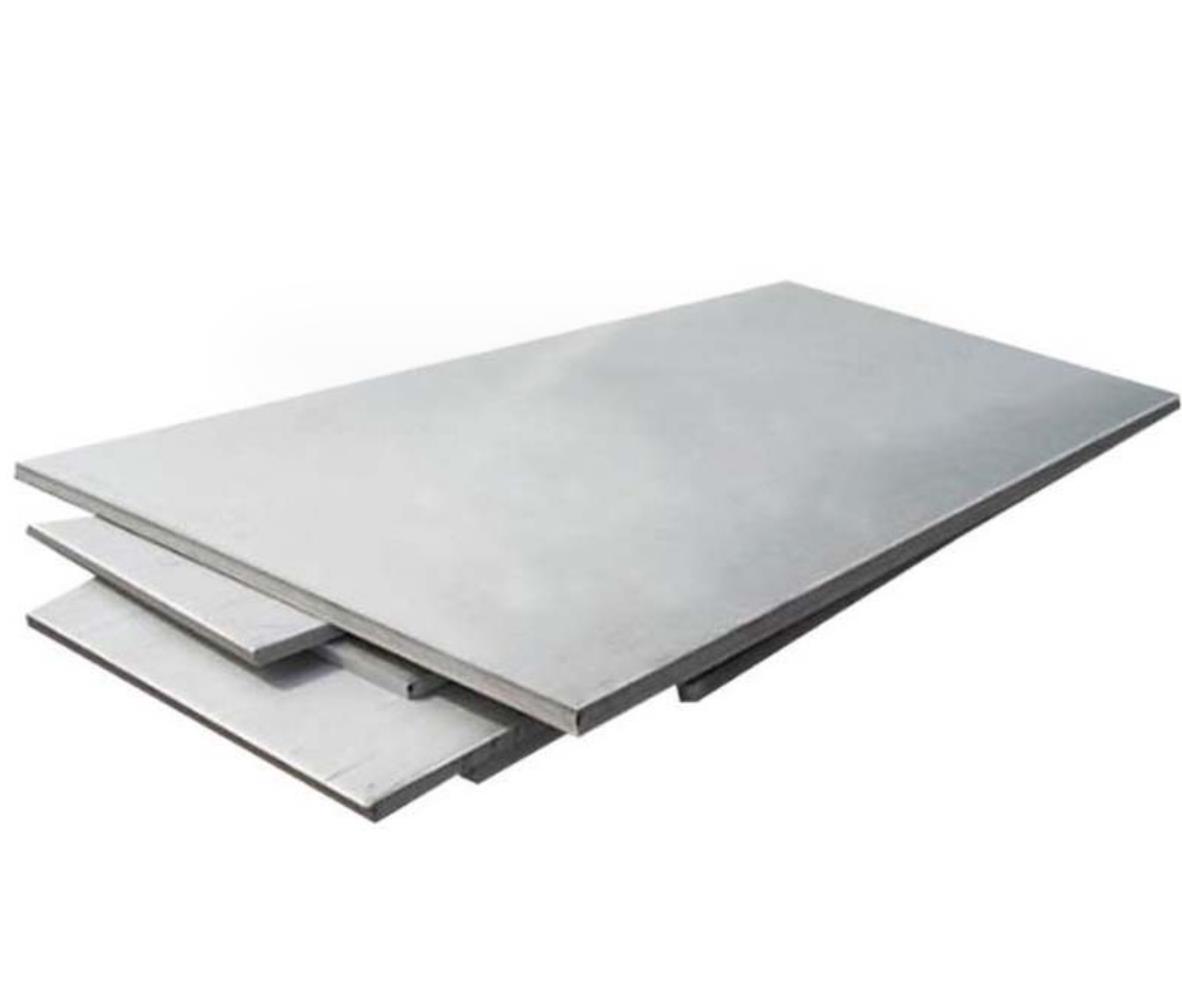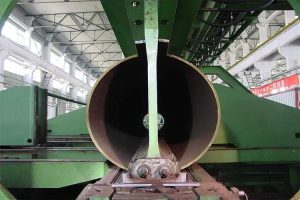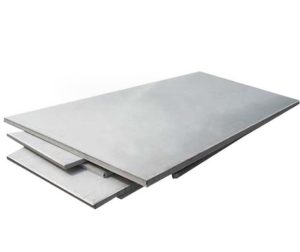1. Problem posing
The unified technical regulations usually include that “austenitic stainless steel flange vessels are used in environments that may cause intergranular corrosion, and solution or stabilization treatment shall be carried out after welding”. Such requirements have their own rationality. However, even if the designer puts forward this item in the technical requirements of the drawing, the manufacturer is required to carry out the post weld heat treatment of stainless steel flange vessels (such as heat exchangers). Because the actual heat treatment process parameters are difficult to control and other unexpected difficulties, it is usually difficult to meet the ideal requirements put forward by the designer. In fact, most of the stainless steel flange equipment in service is used in the post weld state.
This prompted us to think: intergranular corrosion is the most common corrosion form of austenitic stainless steel flange pipe fittings, so what is the mechanism of intergranular corrosion? In what medium environment can intergranular corrosion occur? What are the main methods to prevent and control intergranular corrosion? Whether austenitic stainless steel flange vessels are subject to heat treatment after welding in the environment that may cause intergranular corrosion? This article refers to the relevant standards, specifications, monographs, and personal views in combination with the actual production.
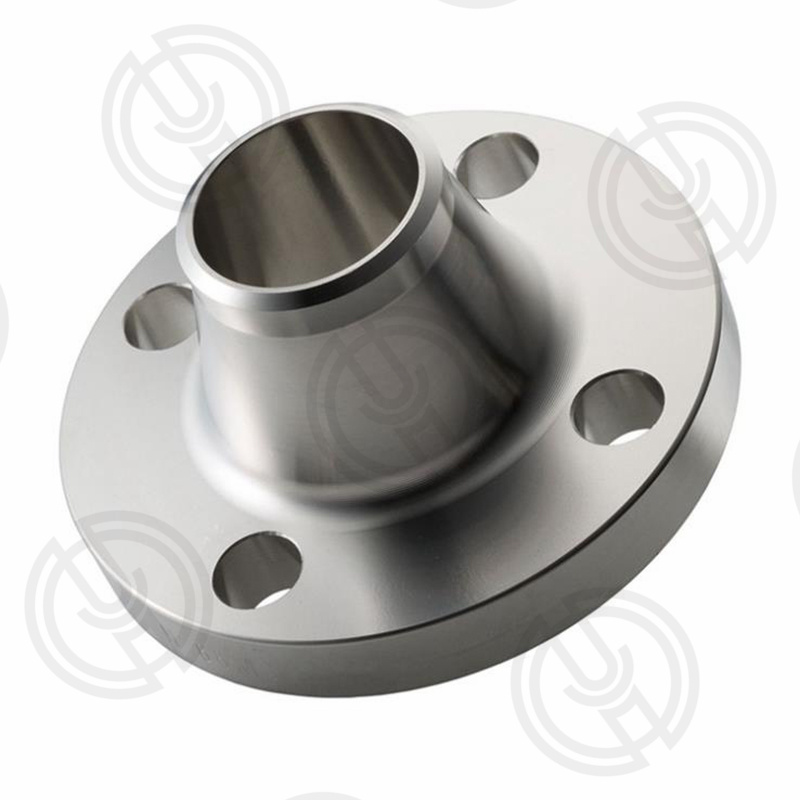
2. Mechanism of intergranular corrosion
Intergranular corrosion is a common local corrosion. The corrosion develops along the grain boundary of metal or alloy or its adjacent areas, and the grain corrosion is very slight. This corrosion is called intergranular corrosion. This corrosion greatly weakens the binding force between grains. Severe intergranular corrosion can make the metal lose its strength and ductility and break under normal load. Modern theories of intergranular corrosion mainly include the theory of chromium depletion and the theory of selective dissolution of impurities at grain boundaries.
2.1 Poor chromium theory
The reason for intergranular corrosion of commonly used austenitic stainless steel flange pipe fittings in oxidizing or weak oxidizing media is mostly due to improper heating during processing or use. The so-called improper heating means that steel will be sensitive to intergranular corrosion when it is heated or slowly cooled through the temperature range of 450~850 ℃. Therefore, this temperature is a dangerous temperature for austenitic stainless steel flange pipe fittings. Stainless steel materials have been solution treated before leaving the factory. The so-called solution treatment is to heat the steel to 1050~1150 ℃ and then conduct quenching to obtain homogeneous solid solution. Austenitic steel flange pipe fittings contain a small amount of carbon, and the carbon solid solubility in austenite decreases with temperature drop. For example, the carbon solid solubility of 0Cr18Ni9Ti is about 0.2% at 1100 ℃ and about 0.02% at 500~700 ℃. Therefore, the carbon of solution treated steel is supersaturated.
When the steel is heated or cooled through 450~850 ℃, carbon can form (Fe, Cr) 23C6 to precipitate from austenite and distribute on the grain boundary. The chromium content of (Fe, Cr) 23C6 is much higher than that of the austenitic matrix. Its precipitation naturally consumes a large amount of chromium near the grain boundary, and the consumed chromium cannot be replenished in time through diffusion from the grain. Because the diffusion speed of chromium is very slow, the chromium content near the grain boundary is lower than the necessary limit for passivation (i.e. 12% Cr), forming a chromium poor area, so the passivity is damaged, and the potential near the grain boundary decreases, However, the grain itself is still in a passive state with high potential. The grain and the grain boundary form a passive micro galvanic cell. The cell has an area ratio of a large cathode to a small anode, which leads to corrosion in the grain boundary area.
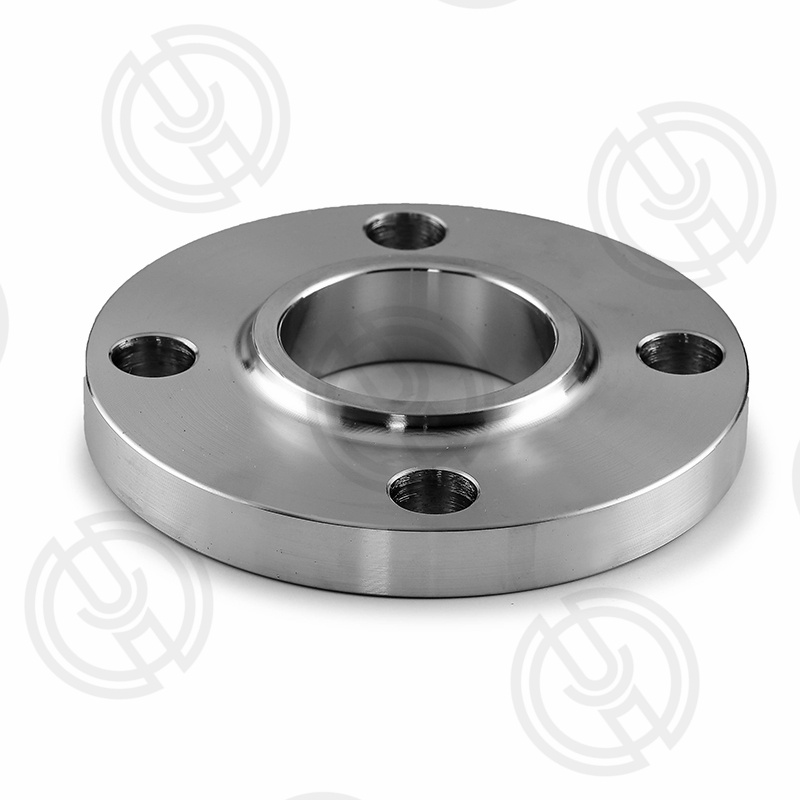
2.2 Theory of selective dissolution of grain boundary impurities
In production practice, we also learned that austenitic stainless steel flange pipe fittings can also produce intergranular corrosion in strong oxidizing media (such as concentrated nitric acid), but the corrosion is different from that in oxidizing or weak oxidizing media. It usually occurs on the steel after solution treatment, but not on the steel after sensitization treatment. When the solid solution contains phosphorus, an impurity up to 100 ppm, or silicon impurity up to 1000 – 2000 ppm, they will segregate on the grain boundary. These impurities will dissolve under the action of strong oxidizing medium, leading to intergranular corrosion. When the steel is sensitized, because carbon can form (MP) 23C6 with phosphorus, or because the first segregation of carbon restricts the diffusion of phosphorus to the grain boundary, both of these conditions will eliminate or reduce the segregation of impurities at the grain boundary, thus eliminating or weakening the susceptibility of the steel to intergranular corrosion.
The above two theories to explain the mechanism of intergranular corrosion are respectively applicable to a certain alloy structure state and a certain medium, not mutually exclusive but mutually complementary. In production practice, the most common intergranular corrosion of stainless steel occurs in weak oxidizing or oxidizing medium, so the vast majority of corrosion examples can be explained by the chromium poor theory.
3.Medium environment causing intergranular corrosion
There are two main types of media that cause intergranular corrosion of commonly used austenitic stainless steel flange pipe fittings. One is oxidizing or weak oxidizing medium, and the other is strong oxidizing medium, such as concentrated nitric acid. The common one is the first type. The following lists the common medium environments that cause intergranular corrosion of austenitic stainless steel.
3.1 Common medium causing intergranular corrosion of austenitic stainless steel flange pipe fittings
In G A. The “Corrosion Data Chart” compiled by Nelson lists common mediums causing intergranular corrosion of austenitic stainless steel: acetic acid, acetic acid+salicylic acid, ammonium nitrate, ammonium sulfate, chromic acid, copper sulfate, fatty acid, formic acid, ferric sulfate, hydrofluoric acid+ferric sulfate, lactic acid, nitrate, nitric acid+hydrochloric acid, oxalic acid, phosphoric acid, seawater, salt spray, sodium bisulfate, sodium hypochlorite, sulfur dioxide (wet), sulfuric acid, sulfuric acid+copper sulfate, Sulfuric acid+ferrous sulfate, sulfuric acid+methanol, sulfuric acid+nitric acid, sulfite, phthalic acid, sodium hydroxide+sodium sulfide.
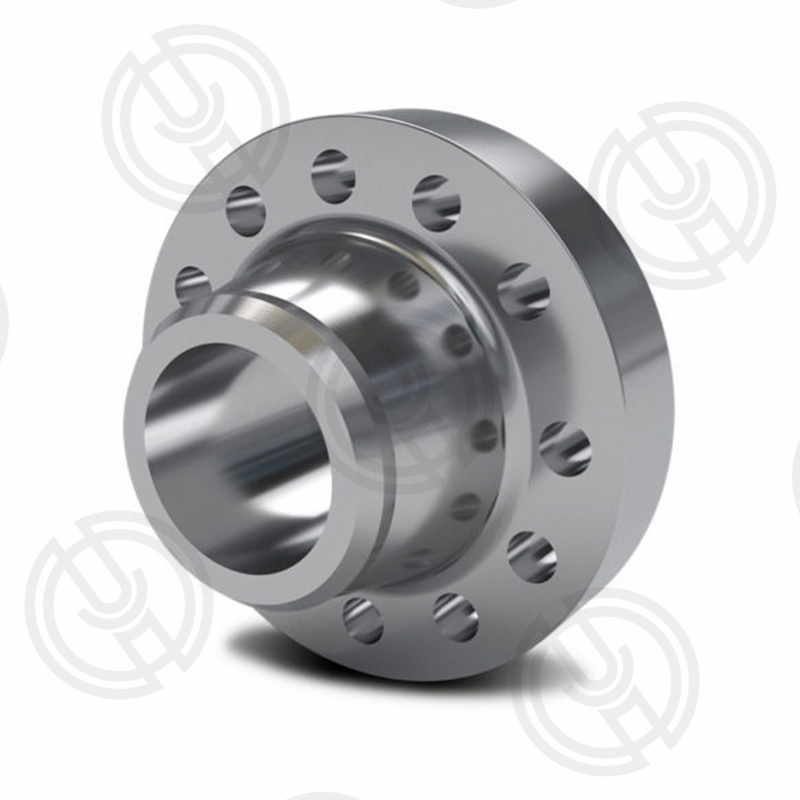
3.2 Intergranular corrosion tendency test
When austenitic stainless steel is used in an environment that may cause intergranular corrosion, intergranular corrosion tendency test shall be conducted in accordance with GB4334. 1~GB4334 Test Method for Stainless Steel Intergranular Corrosion. The selection and qualification requirements of austenitic stainless steel intergranular corrosion tendency test method shall meet the following requirements:
(1) Austenitic stainless steels used in nitric acid with a temperature of 60 ℃ or higher and a concentration of 5% or higher and stainless steels specially used for concentrated nitric acid shall be tested in accordance with GB4334. 3 Test Method for 65% Nitric Acid Corrosion of Stainless Steel. The average corrosion rate of five cycles or the corrosion rate of three cycles shall not be greater than 0.6 g/m2 h (or equivalent to 0.6 mm/a). The test sample can be in service state or sensitized state.
(2) Chromium nickel austenitic stainless steel (such as 0Cr18Ni10Ti, 0Cr18Ni9, 00Cr19Ni10 and similar steels): General requirements: According to GB4334.5 Stainless Steel Sulfuric Acid Copper Sulfate Corrosion Test Method, after bending test, the sample surface shall be free of intergranular corrosion cracks. Higher requirements: The average corrosion rate shall not be greater than 1.1 g/m2 h according to GB4334. 2 Stainless Steel Sulfuric Acid – Iron Sulfate Corrosion Test Method.
(3) Molybdenum containing austenitic stainless steel (such as 0Cr18Ni12Mo2Ti, 00Cr17Ni14Mo2 and similar steels): General requirements: after bending test, the sample surface shall be free of intergranular corrosion cracks according to GB4334.5 Stainless Steel Sulfuric Acid Copper Sulfate Corrosion Test Method. Higher requirements: according to GB4334. 4 Test Method for Nitric Hydrofluoric Acid Corrosion of Stainless Steel, the corrosion ratio shall not be greater than 1.5. The average corrosion rate shall not be greater than 1.1 g/m2 h according to GB4334.2 Test Method for Sulfuric Acid – Ferric Sulfate.
(4) If the medium has special requirements, intergranular corrosion tests other than those specified above can be conducted and corresponding qualification requirements can be specified.
4.Measures to prevent and control intergranular corrosion
According to the corrosion mechanism, the following measures are taken to prevent and control the intergranular corrosion of austenitic stainless steel flange pipe fittings:
(1) Ultra low carbon stainless steel is used to reduce the carbon content to below 0.03%. If 00Cr17Ni14Mo2 is selected, (Fe, Cr) 23C6 will not be formed in the steel, and there will be no chromium poor area, so as to prevent intergranular corrosion. Generally, 0Cr18Ni9 can be used for parts with low strength, low stress and good plasticity.
(2) Stabilized stainless steel is stainless steel containing titanium and niobium in steel (that is, stabilized stainless steel). When smelting steel, a certain amount of titanium and niobium are added. They have a large affinity with carbon, so that TiC or NbC can be formed in steel. In addition, the solid solubility of TiC or NbC is much smaller than (Fe, Cr) 23C6, and they are almost insoluble in austenite at the solution temperature. In this way, although (Fe, Cr) 23C6 will not precipitate in a large amount at the grain boundary after sensitization temperature, the tendency of austenitic stainless steel to produce intergranular corrosion is largely eliminated. For example, 1Cr18Ni9Ti, 1Cr18Ni9Nb and other steels can work at 500~700 ℃ without intergranular corrosion tendency.
(3) Re solution treatment When conducting electric welding on austenitic stainless steel flange pipe fittings, the temperature of the arc molten pool is more than 1300 ℃, the temperature on both sides of the weld decreases with the increase of distance, and there is a sensitization temperature zone. Austenitic stainless steel shall not be heated and slowly cooled within the sensitizing temperature range as much as possible. If there is a tendency of intergranular corrosion, generally heat the unstable stainless steel to 1000~1120 ℃, keep the heat for 1~2 minutes per mm, and then quench; For stabilized stainless steel, it is appropriate to heat it to 950~1050 ℃. The steel after solution treatment shall be prevented from heating at the sensitization temperature, otherwise chromium carbide will precipitate again along the grain boundary.
(4) When selecting the correct welding method for welding, if the operation is unskilled or the welding material is too thick, the longer the welding time is, the more opportunities to stay in the sensitization temperature zone will be, as a result, the base metal on both sides of the weld will be sensitive to intergranular corrosion. In order to reduce the sensitivity of welded joints, the input of line energy should be minimized during welding. Generally, argon arc welding has lower input line energy than electric arc welding, so argon arc welding should be used for welding and repair. Ultra low carbon stainless steel or stainless steel containing Ti and Nb stabilizing elements shall be selected for weldments, and ultra low carbon electrode or electrode containing Nb shall be selected for welding rods. When argon arc welding is adopted, in order to avoid overheating of the welded joint, the operation shall be fast, and the base metal on both sides of the weld shall be cooled quickly after welding to minimize the stay time in the sensitization temperature range.
5.Post welding treatment of stainless steel flange pipe fittings
Post weld heat treatment is not necessarily emphasized in the weld area. Generally, the solution treatment should be carried out within the range of 1100~1150 ℃ after holding for a certain period of time and then quenching. The cooling within the range of 925~540 ℃ should be completed within three minutes, and the rapid cooling should be continued to below 425 ℃; The stabilization treatment shall be carried out within the temperature range of 850~880 ℃, and then air cooling shall be carried out after several hours of heat preservation. The expected post weld heat treatment effect is closely related to each key process parameter in the whole process of heat treatment (such as furnace inlet temperature, heating rate, temperature difference of each part of the workpiece in the heating process, furnace atmosphere, heat preservation time, temperature difference of each part in the heat preservation process, cooling rate, furnace outlet temperature, etc.).
For austenitic stainless steel flange vessels that may cause intergranular corrosion, solution treatment or stabilization treatment of general parts can be achieved. However, the post weld heat treatment of the whole vessel (mostly the heat exchanger) will face many difficulties. This type of treatment is not local post weld heat treatment, but the post weld heat treatment of the whole welding component or the whole vessel. Due to the complex structure and shape of most chemical vessels (such as our commonly used shell and tube heat exchanger).
If post weld solution or stabilization treatment is required for the weld zone of the whole shell and tube heat exchanger, the above key process parameters can not be controlled at all, let alone to ensure the quality of post weld heat treatment. Even the treatment is often self defeating. Not only the microstructure of the weld is not improved, but the microstructure of the base metal is deteriorated unnecessarily. Therefore, more than 90% of austenitic stainless steel chemical containers used in intergranular corrosion environment are still used in the post weld state, rather than in the post weld heat treatment state.

6.One point of view
Chromium nickel austenitic stainless steel flange pipe fittings are the most commonly used anti-corrosion materials, and intergranular corrosion is the most common failure form of chromium nickel austenitic stainless steel vessels. The intergranular corrosion greatly weakens the bonding force between grains, and in severe cases, it can completely lose the mechanical strength. The stainless steel subjected to this corrosion looks very bright on the surface, but it can’t stand to be broken into fine particles by gentle tapping. As the intergranular corrosion is not easy to check, it will cause sudden damage to the equipment, which is very harmful and should be paid enough attention to.
Chromium nickel austenitic stainless steel flange vessels are basically formed by welding, and there are intergranular corrosion sensitization zones on both sides of the welded joint, which are always subject to corrosion damage before the base metal. It is our goal to improve the ability of resistance to intergranular corrosion in the weld zone to the same extent as the base metal through post weld heat treatment, which is our original intention for post weld heat treatment. However, in practice, there are many factors to consider, such as: the overall structure and shape of the weldment are complex, and it is difficult to guarantee the process parameters of post weld heat treatment. Therefore, in fact, most in-service chromium nickel austenitic stainless steels are used in the post weld state.
Whether the weld zone of Cr Ni austenitic stainless steel flange vessel used for intergranular corrosion resistance is subject to solution treatment or stabilization treatment cannot be generalized simply. The structural shape of the vessel should be specifically analyzed to see if the effect of heat treatment can be guaranteed. Otherwise, even if we put forward the requirements for post weld heat treatment, it will often backfire, not only achieving the undesirable effect, but also affecting the structure of the base metal.
In order to improve the ability of Cr Ni austenitic stainless steel flange vessels to resist intergranular corrosion, it is necessary to select ultra-low carbon stainless steel and stabilized stainless steel according to the specific corrosion environment and the corrosion mechanism, select the correct welding method when welding, and properly combine the above several prevention and control measures to achieve good results. It cannot simply rely on post welding solution or stabilization treatment.

